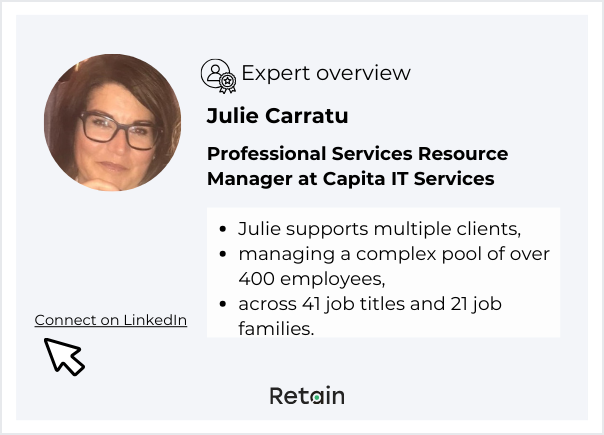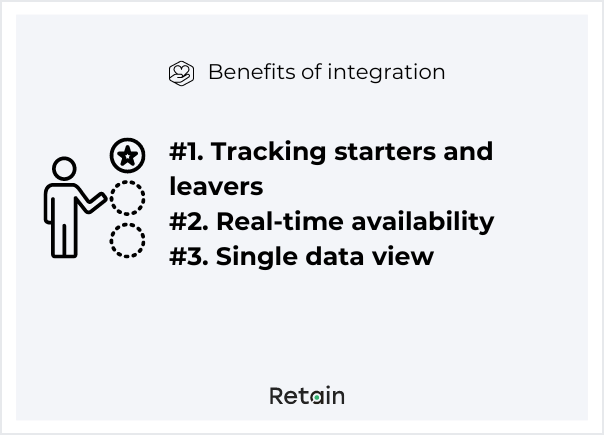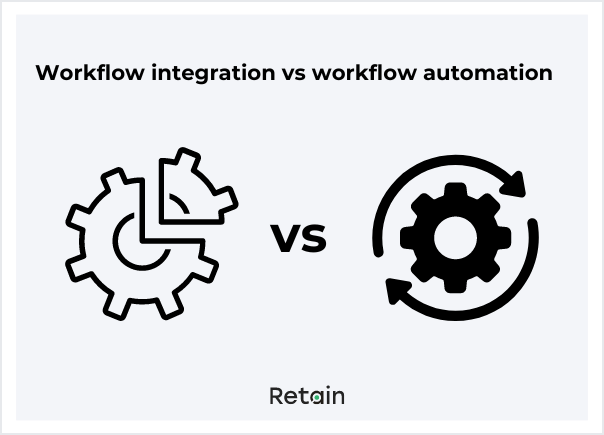Resource planning software offers lots of benefits, like improved scheduling, accurate capacity planning, and easier scalability. However, it can present challenges, with one of the biggest often being integration. For the software to work effectively, it must align with your workflows and integrate seamlessly with your existing tech stack.
To provide deeper insights, we consulted an expert in resource management. Let’s quickly introduce you to our expert…
Meet the expert

Quick overview: Julie supports multiple clients, managing a complex pool of over 400 employees across 41 job titles and 21 job families.
Julie emphasises that an out-of-the-box resource management tool enables the setup of resource roles, job families, cost rates, and actual resource allocation of projects. But as the tool and processes mature, integrating business processes, such as onboarding from existing ERP systems, becomes a crucial next step.
Here’s why.
Benefits of integrating resource planning software into your workflows
With a well-integrated system, resource managers gain a comprehensive view of available resources, project timelines, and potential bottlenecks. This ensures that every project is staffed appropriately, deadlines are met, and resources are utilised efficiently.
Here are just a handful of the benefits of integrating resource planning software into your workflows:

#1. Tracking starters and leavers
One significant benefit of integrating resource planning software is the ability to track starters and leavers accurately. Knowing when new employees join or leave is crucial, especially if you have a high turnover of contractors and fixed-term employees.
Julie highlights, "The interface with systems like SAP or Workday is key. It enables you to track headcount and financials effectively, ensuring you always have a clear view of your workforce dynamics."
#2. Real-time availability
Another advantage is gaining real-time visibility into employee availability. When your resource management system integrates with tools tracking holidays and long-term sick leave, it provides an up-to-date picture of who is available.
Julie adds, "Having a view of approved holidays and long-term sickness visible in your resource management system allows resource managers to know who is available or not in real time. This real-time data is essential for making informed staffing decisions quickly."
#3. Single data view for decision making
Integration provides a single view of data, which is invaluable for decision-making. Julie notes, "From a management point of view, integration enables you to have a single view of the data to help with decision-making. By automating and dovetailing into standard business processes, you minimise manual intervention, improve efficiency, and reduce the amount of rework, helping to keep costs to a minimum."
This consolidated view helps in identifying potential resource shortages, reallocating resources as needed, and ensuring that projects remain on track. It also facilitates better communication and collaboration among different teams, as everyone has access to the same up-to-date information.
In summary, integrating resource planning software into your workflows brings numerous benefits. It allows for accurate tracking of starters and leavers, provides real-time visibility into employee availability, and offers a single, comprehensive view of data to aid in decision-making.
As Julie Carratu aptly puts it, "By automating and integrating resource management with your existing systems, you not only enhance efficiency but also significantly reduce the manual effort and potential for errors."
This leads to improved project outcomes, better utilisation of resources, and ultimately, a more efficient and effective organisation.
Resource workflow integration vs resource workflow automation
Before we move on to some expert tips, it’s worth quickly going over the differences between resource workflow integration and resource workflow automation. Because while both aim to enhance efficiency and collaboration, they address different aspects of workflow management.

💡In summary: Integration focuses on connecting various applications to enable seamless data exchange, whereas automation optimises specific tasks within these integrated workflows.
As Julie Carratu explains, "Workflow integration sets the foundation for data exchange across applications, ensuring that different systems can communicate effectively. On the other hand, workflow automation focuses on optimising specific tasks within these workflows, making processes faster and more accurate."
What is resource planning workflow integration?
Workflow integration is the first step in creating a cohesive environment where different applications can work together. It involves setting up connections between your resource planning software and other tools such as ERP systems, timesheet software, and accounting software. This integration ensures that data flows seamlessly across systems, providing a unified view of your operations.
Julie emphasises the importance of integration by stating, "Successful integration of systems like SAP or Workday is essential for tracking starters and leavers, managing headcount, and keeping financials in check. This interconnectedness allows for real-time updates and ensures that all stakeholders have access to accurate, up-to-date information."
What is resource planning workflow automation?
Once your systems are integrated, the next step is to automate specific tasks within these workflows. Workflow automation uses predefined rules and triggers to execute routine tasks without manual intervention. This saves time and enhances accuracy by reducing the risk of human error.
Julie elaborates, "Workflow automation not only saves time but also enhances accuracy and collaboration across teams. For instance, automating the onboarding process and workforce scheduling ensures that tasks are completed promptly and consistently. This level of automation allows resource managers to focus on more strategic activities rather than getting bogged down by routine tasks."
Both workflow integration and automation play critical roles in enhancing efficiency and collaboration. Integration ensures that data is readily available across different applications, creating a seamless flow of information. Automation then takes this integrated data and optimises specific tasks, ensuring they are completed quickly and accurately.
As Julie Carratu sums it up, "Workflow integration lays the groundwork for efficient data exchange, while automation enhances task execution within these workflows. Together, they provide a powerful combination that improves overall efficiency and collaboration across the organisation."
Expert tips for seamless resource planning software integration
Integrating resource planning software can be a complex task, but with the right approach, it can be done smoothly and effectively. Here are some expert tips to guide you through the process:
1. Set clear goals and objectives
Before starting the integration process, it's crucial to define clear goals and objectives. Having a well-defined plan helps in setting the direction and ensures that everyone involved understands the expected outcomes.
Julie advises, "Start with clear goals and objectives. Treat the integration as a project with distinct business benefits. This clarity helps in maintaining focus and ensures that all efforts are aligned towards achieving these goals."
2. Engage key stakeholders
Successful integration requires the involvement of key stakeholders from various departments. Engaging these stakeholders early in the process ensures their buy-in and helps in identifying potential challenges and requirements.
Julie emphasises, "Engage key stakeholders from the beginning. Effective communication at all levels is essential to bring everyone on board. This collaborative approach ensures that the integration process addresses the needs of all departments and facilitates smoother implementation."
3. Provide comprehensive training
Training is a critical component of a successful software integration. Ensure that all users are adequately trained on the new system to promote effective utilisation and smooth adoption.
"As part of the integration process, provide comprehensive training to all users," Julie suggests. "Training helps in familiarising users with the new system, reducing resistance, and promoting effective utilisation."
4. Use software integrations and APIs
Leveraging software integrations and APIs is essential for creating a cohesive environment where data flows seamlessly between applications. Sync your resource planning software with other critical systems such as timesheet software, ERPs, and accounting software.
Julie shares, "Utilising software integrations and APIs ensures that your resource planning system is interconnected with other vital tools. This creates a seamless flow of data, enhancing overall efficiency and providing a unified view of your operations."
5. Build custom workflows and integrations
Tailoring workflows and integrations to meet specific business needs can significantly enhance the effectiveness of your resource planning software. Custom workflows ensure that the software aligns perfectly with your business processes.
Julie explains, "Building custom workflows and integrations allows you to tailor the software to your unique business requirements. For example, during our integration, we used Microsoft Power Automate to create workflows that alert teams when new projects are created. This customisation provided a holistic view of project requirements, facilitating better resource management."
6. Ensure regular testing
Continuous testing is vital to ensure that the integration functions as expected and to identify any issues early. Regular testing helps in fine-tuning the system and ensuring that it meets all business requirements.
Julie advises, "Regular testing is crucial. Test the integrations extensively to ensure they function correctly and to identify any issues early. This proactive approach helps in maintaining the reliability and efficiency of the integrated system."
As Julie Carratu sums up, "Successful integration hinges on clear planning, effective stakeholder engagement, and leveraging technology. By adopting these strategies, you can achieve a seamless integration that enhances efficiency, accuracy, and collaboration across your organisation."
Create effective resource planning workflows
Integrating resource planning software ensures alignment between people, applications, and tasks, enabling organisations to achieve the best results.
That’s why at Retain, we regularly invest in our software workflows and integration capabilities.

With Retain you can bring together disparate systems for a single, comprehensive view of your business and people:
🔹 Sync your timesheet data, ERP data and more without jumping between tools
🔹 Build custom reports in Retain or export data in a few clicks
🔹 Integrate with Outlook 365 to sync your team's Outlook diaries in real-time
🔹 Seamlessly connect cloud-based and on-premises solutions.
🔹 Set-up custom integrations with Microsoft Logic apps and Retain’s connectors to create additional workflows, custom workflows, or bespoke automation
🔹 Benefit from Retain’s API to integrate Retain into your platform
Get in touch to find out more.


